A Guide to Draught-Proofing Your Home
There are many benefits attached to draught-proofing your home. Taking steps to have your home draught proofed helps you to keep your property both warm and energy-efficient and can help you cut your fuel bills. By draught-proofing your home, you can also cut your carbon footprint and make a better contribution to the environment. Draught proofing your windows and doors allows you to cut your heating bills quickly and cheaply. Read on to find out more about the benefits of draught-proofing your home.
Need to add or improve insulation in your home? Use our quote comparison tool to find out how much you'd pay. It only takes a minute.
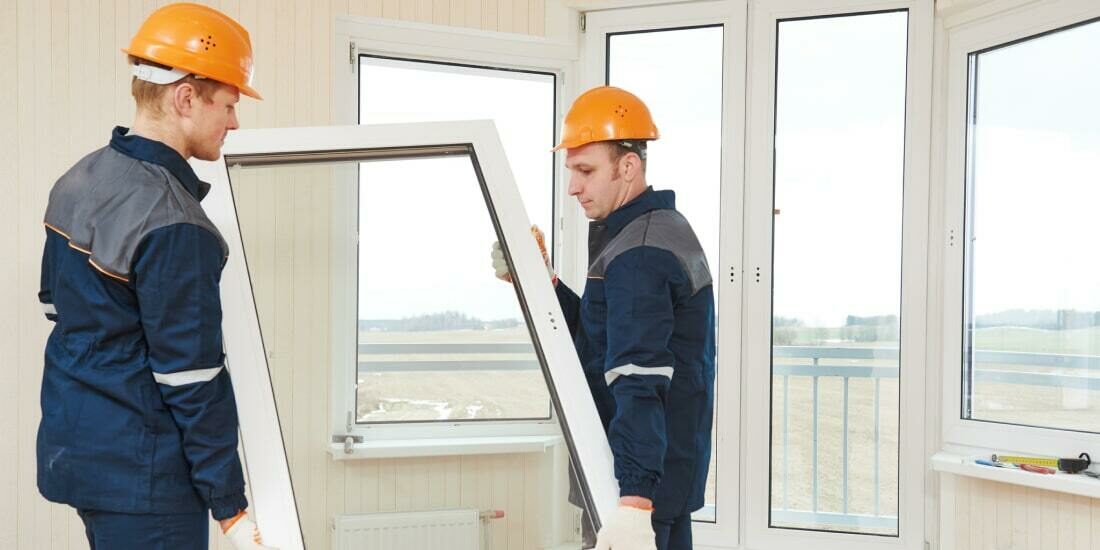
What's On This Page?
Click the links below and head straight to a specific section of the article.
- Draught-Proof Your Home to Cut Your Energy Bills
- Shall I Carry Out the Draught-Proofing Process Myself?
- Ventilating Your Home
- Effective Draught Management
- How Can I Draught-Proof My Windows?
- How Can I Draught-Proof My Doors?
- Should I Consider Draught-Proofing My Internal Doors?
- Should I Draught-Proof My Chimney?
- How Can I Draught-Proof My Floorboards and Skirting Boards?
- How Can I Draught-Proof Loft Hatches?
- How Can I Insulate My Pipework?
- Old Extractor Fans and Wall Cracks
Draught-Proof Your Home to Cut Your Energy Bills
By taking steps to keep cold air out of your home and keep warm air in it, you can cut your fuel bills and make your home more comfortable at the same time. As draught-proofing can lead to such a big reduction in your bills, the amount you pay for it is likely to be covered by these savings within just a few years. If you do want to draught-proof your home yourself, this can help you save money. However, you may get better results if you hire a professional installer to do it. This means it’s definitely worth outsourcing this task if you lack experience in this area and can afford to pay someone to do it for you.
If you want to save energy without spending a great deal of money, draught-proofing is one of the most effective and affordable options available to you. The draught-proofing process involves blocking unwanted gaps that can let cold air into your home and allow warm air to escape. If you’re able to save warm air, you won’t need as much energy to heat your home.
Estimates say that you could save around £50 a year when you draught-proof around your windows and doors. If you have an open chimney in your home, you could save approximately £70 per year by draught proofing it when it’s not in use. Draught-free homes tend to be more comfortable when at lower temperatures, and this means you can make extra savings on your energy bills by turning down your thermostat.
You can see a couple of yearly savings in the interactive graph below.
Shall I Carry Out the Draught-Proofing Process Myself?
Draught-proofing is more likely to be effective if you let the professionals handle things. The exact cost that you pay for draught-proofing can depend on factors like how big your home is and which parts of it you want to draught-proof. Draught-proofing your home may be harder if you live in an older property that only has single-glazing. One of the biggest advantages of letting the professionals handle things is that your installer is likely to know which materials are right for each task and where they should be used. By letting a professional draught-proofer look after the process you may be able to save money in the long run.
Ventilating Your Home
It is important to allow some air to come in and flow out of your home. This keeps properties safe, dry and fresh. This is why you need to avoid blocking or sealing ventilation facilities including extractor fans, underfloor grilles and airbricks, wall vents and trickle vents.
Extractor fans are used to remove damp air from rooms where a lot of moisture production takes place. These can include bathrooms, utility rooms and kitchens. Underfloor grilles and airbricks enable you to keen wooden beams and floor dry, whilst wall vents are used to allow small amounts of fresh air into your property. Many of today’s windows now come with small vents that enable fresh air to trickle into your space. It’s important to avoid blocking any of the above when you’re having your home draught-proofed.
Effective Draught Management
Draughts occur when your property has unwanted gaps. Draughts can occur at any gap in your home that leads outside. Most of these gaps do need to be blocked. However, you must avoid blocking areas that require good ventilation. These include parts of your home with open fires and flues and rooms where a great deal of moisture is produced.
How Can I Draught-Proof My Windows?
You can purchase draught-proofing strips for your windows to reduce the amount of warm air you’re losing through them. These can be stuck around your window frames to fill the gaps between the frame and the window itself. Two types of these strips are available. These include self-adhesive foam strips. It’s easy to install these, and they are inexpensive. However, they don’t tend to last as long as metal or plastic strips that have wipers or brushes attached to them. These are costlier but will serve you well for longer.
It's important to buy strips that are the right size for the gaps. If your strips are too big, they may get crushed. It may also become impossible to close your window. However, if your strips are too small, a gap will remain. If you have sliding sash windows, foam strips won’t be effective. Brush strips will be more effective. If you have windows that do not open, a silicon sealant can help you get the right outcome. Perhaps you have had your windows for a long time and are ready for an upgrade? Replacing them with more energy-efficient windows can help you reduce energy costs and improve your comfort levels.
How Can I Draught-Proof My Doors?
By having your external doors draught proofed, you can prevent a great deal of heat from escaping. Draught-proofing doors doesn’t tend to be expensive. There are several parts of a typical external door you can consider draught-proofing. These include:
- Keyholes
- Letterboxes
- Gaps at the bottom of your door
- Gaps around the edges of your door
To draught-proof your keyhole, you can use a purpose-made cover that places a metal disc over it. You can draught-proof your letterbox with a special brush or a flap. Just measure your letterbox first to avoid wasting money. You can block gaps at the bottom of your external door or doors with a hinged flap or a brush. Foam, wiper strips and brushes can be used to block gaps around the edges of your doors.
Should I Consider Draught-Proofing My Internal Doors?
If you have internal doors that open up into a room that isn’t normally heated, it’s a good idea to have these draught-proofed. These may include kitchens and spare rooms. Try to keep these closed as much as possible so cold air can’t move to other parts of your home. If there are gaps at the bottom of these doors, you can use a draught excluder. You shouldn’t need to draught-proof internal doors that are located between two heated rooms. This is because energy isn’t lost when warm air circulates.
Should I Draught-Proof My Chimney?
If you have a fireplace but don’t use it, you could be losing a lot of heat through your chimney. There are two options available if you are ready to draught-proof your chimney. You can either use a chimney draught excluder which you can fit inside your chimney or around your fireplace, or you can fit a cap over your chimney pot. The latter task is generally best left to an experienced professional.
How Can I Draught-Proof My Floorboards and Skirting Boards?
Adding filler to gaps in your floor is an effective way to stop draughts. Opt for a filler that’s able to tolerate movement. A silicone-based filler may be your best option. It’s important to choose a movement-tolerant filler as skirting boards and floorboards tend to contract, move and expand quite considerably. Solutions that you may wish to consider include mastic-type products, decorator’s caulk and flexible colours. Although fillers tend to break down over time, it’s not complex or expensive to replace them.
How Can I Draught-Proof Loft Hatches?
A great deal of warm air can be lost through your attic or loft. If you do wish to have your loft hatch draught-proofed, you can use strip insulation.
How Can I Insulate My Pipework?
There are many options available if you want to draught-proof your pipework. Silicone fillers can be very effective, but you may need to use expanding polyurethane foam if you have bigger gaps to fill.
Old Extractor Fans and Wall Cracks
If you have an older extractor fan, you may need to fill it with bricks or concrete blocks. It may need to be sealed from the inside and outside. Hard-setting fillers and cements can be used to fill cracks in your walls. However, you may need to consult a specialist if you have a larger crack in your wall.
Related articles
View all Insulation articles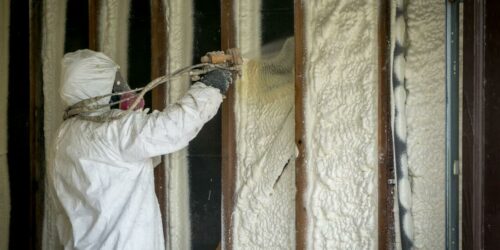
How Long Does Spray Foam Insulation Last?
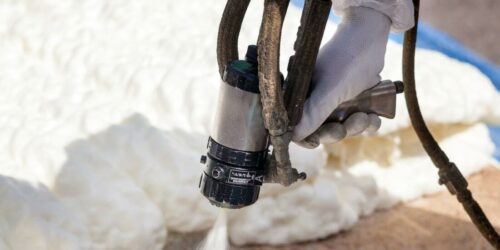
Can I Install DIY Spray Foam Insulation Myself?
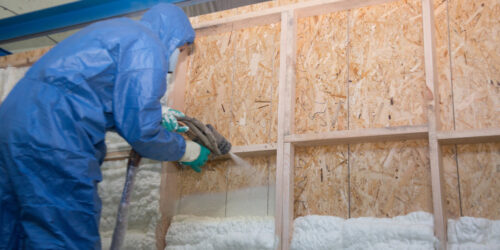
Six Benefits of Spray Foam Insulation
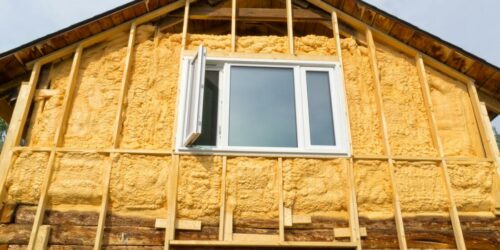
Is My Property Suitable for Spray-On Insulation Foam?

Why Consider Spray Foam Insulation in Roofs?
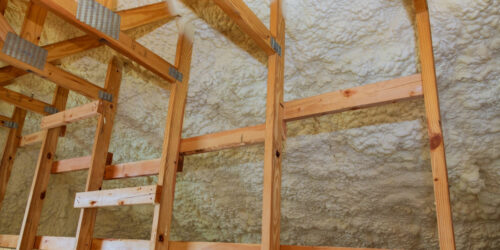
Icynene Spray Foam Insulation: A Complete Guide
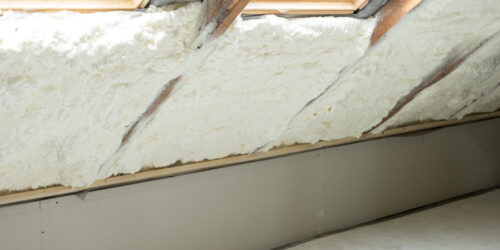
Spray Foam Insulation Installers: What to Expect







